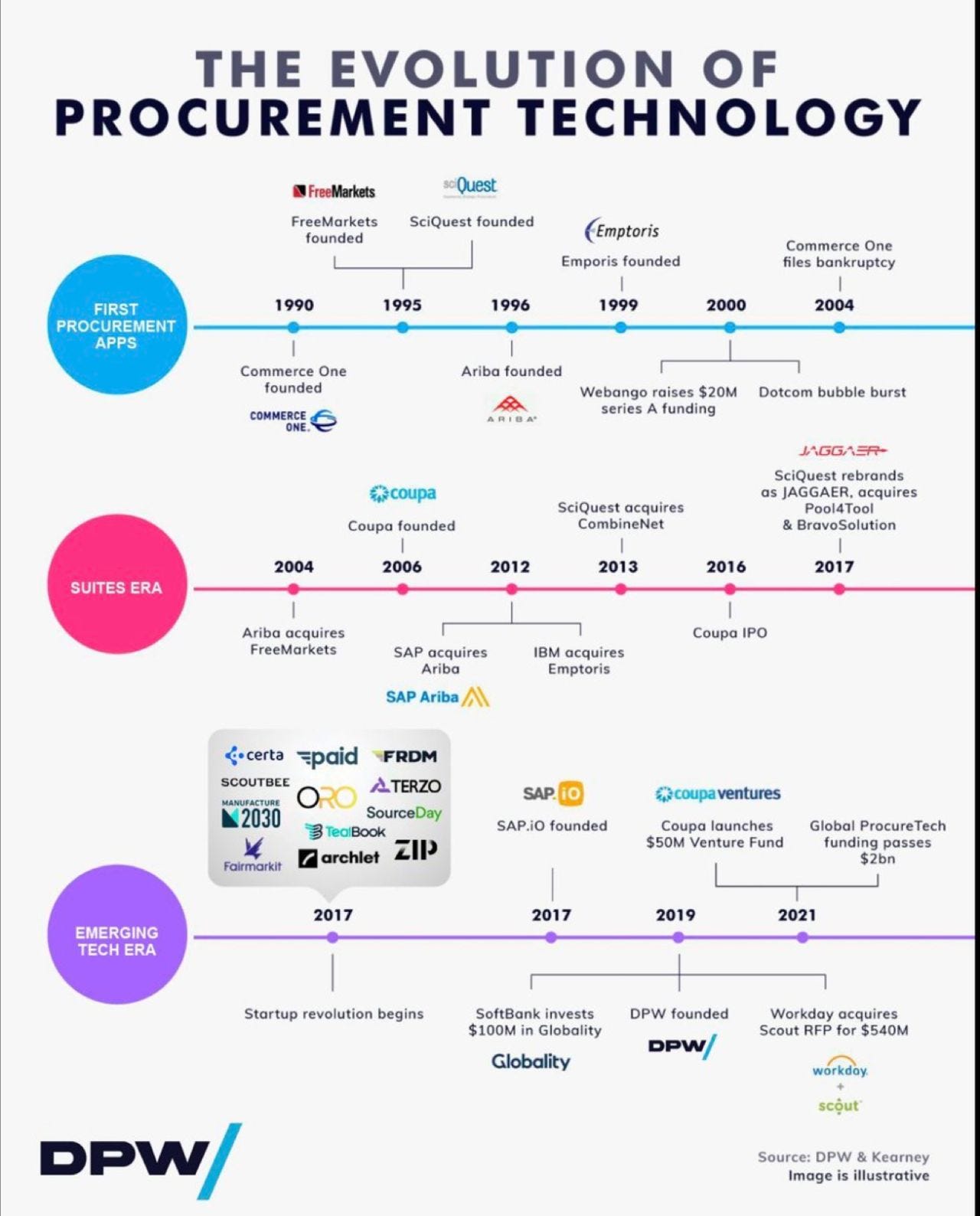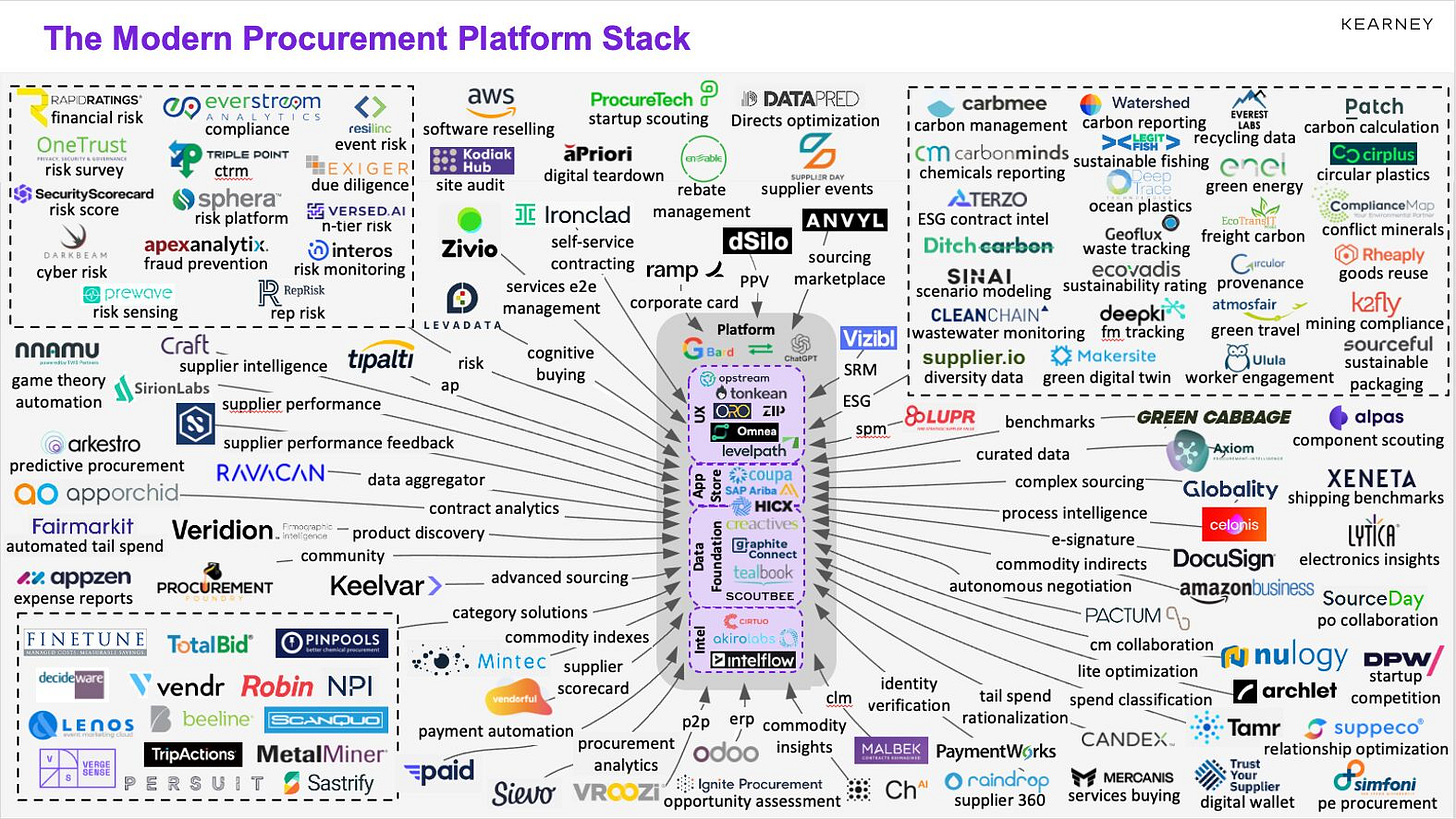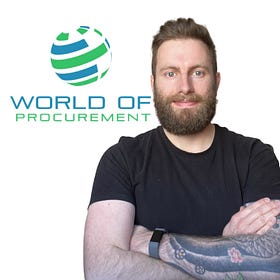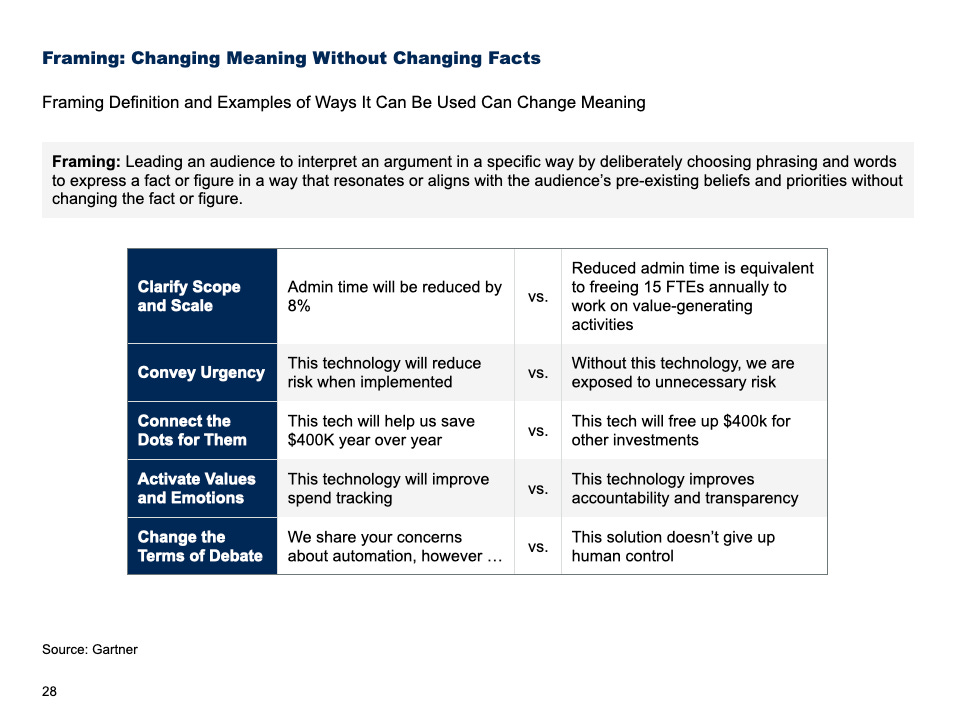How to get your Procurement Tech Request Approved
The challenge of getting Procurement Tech with Gartner insights
Before we get into this, I’m collaborating with Gartner to bring you, the Procurement Legends, some incredible insights. If you’re a passionate procurement pro then check out this survey and unlock some incredible insights to help you do more, later this year.
Gartner sourcing & procurement researchers are currently conducting a survey on procurement functional transformation. To participate in this anonymous survey, which will take approximately 20 minutes, click the link below.
In exchange for your participation, Gartner will share a summary of findings if you choose to share your email address in the survey. Sharing your email is entirely optional. The full findings will be unveiled at an executive retreat on October 10, 2023.
Please click the link below to start.
How to get your Procurement Tech Request Approved
In today's digital era, procurement professionals must stay up-to-date with the latest technology solutions to stay competitive in their role.
We all know that the digitisation/digitalisation of procurement is happening. You need the knowledge to keep up to protect your future career.
Getting procurement technology requests approved can be a challenging task.
And I want to help you with this.
For context, in my previous role before I joined Gatekeeper, a Procurement Tech company, to Head up their Community Team, I was the Head of Supplier Contracts and Compliance at 10x Banking, a Fintech that provides a next-generation cloud platform for banks, such as Chase in the UK.
It was in this role that I got the green light to leave a poorly performing and expensive CLM and evaluate the market offerings in P2P, Intake, and CLM. I was then able to get the budget approved to go with… Gatekeeper.
Anyway, I want to focus on how I did this and how it might help you get whatever tech you need in your role.
Throughout this article, I will share some insights that my friends over at Gartner shared with me from their series on “Accelerating Procurement’s Digitization - Securing Investments in Procurement Technology”.
The State of Procurement Technology
According to Gartner's study, 43% of organisations are just getting started with procurement technology, while only 1% are experts in this area.
The just getting started is slightly higher than I expected but I also know that in smaller orgs (Garter’s study looked at revenues of above £250m/$500m in the USA), it’s likely to be a much lower figure as people bootstrap and make use of spreadsheets and project management tools like Notion, Asana, and Trello.
We know these apps are great until they aren’t.
Even with the use of automation and SaaS solutions such as Zapier, it can be extremely difficult to build an end-to-end procurement tech stack that can work with the entirety of your organisation's tech stack.
But let’s face it, Procurement Tech as an idea is relatively immature compared to other SaaS products as shown by the history of Procurement Tech that DPW captured.
But wait - let’s cover what the tech stack is before I presume that you know this.
What is a Procurement Tech Stack?
A procurement tech stack refers to the collection of technology solutions that a procurement function uses to manage its operations.
This can include solutions that we’ve mentioned already such as spend analysis, e-sourcing, P2P, AP invoice automation, and contract lifecycle management, among others.
The goal of a procurement tech stack is to streamline and automate procurement processes, improve data quality, and increase efficiency.
However, you’ll probably realise here that this means that you need to potentially connected different solutions to one another to cover every aspect of the Procurement Lifecycle, or go for a all-in-one solution/ERP.
This is known as the Best of Breed vs All In One vs Hybrid Procurement Tech Stack.
Dr Elouise Epstein just released her latest Spider Map to encompass her (and Kearney’s view) of the Procurement Tech Landscape.
As you can see, there are many categories. And as a note, the Companies here are less important than the Categories they represent.
I’ve been thinking of putting together a World of Procurement Tech Map this year - perhaps we’ll get to that.
But the complexity of the tech stack doesn’t stop there.
We cannot talk about “Procurement’s Tech Stack” in isolation of the entirety of the organisation. We need to consider how the “Procurement Tech Stack” interacts with other parts of the business, such as Finance with their system(s), IT, which may consider Asset Management of Goods and SaaS procured, and even Legal, which may have their own Legal Tech solution.
Procurement must understand how it can show that whatever solution it wants to bring can connect with these solutions where possible to drive significant value across the organisation.
Check out our Podcast on this from late last year.
Procurement Pros need to know about the Modern Procurement Tech Stack
A deep dive into the Procurement Tech Stack
What is the ROI of Procurement Tech?
I recently put together some slides on Procurement Tech ROI. But let me caveat this - I was coming at this from the perspective of my role with Gatekeeper.
In short:
Time Savings that reduces the need for people to do things
Cost Savings to spend the money elsewhere/invest money etc
Efficiencies in X areas
Better adoption of Procurement and Contract Processes
Automation within Processes
Use of AI to Extract and Summarise Data
Risk Management Feeds to reduce risks emerging somewhere down the line
But this might look different if you considered a tail spend automation solution that looked to cut 20% of costs, reduce time spent by an FTE(s) on dealing with these suppliers and make it easier to get started with them via efficient onboarding.
So keep this in mind and understand that you must become the master in presenting the potential ROI for your entire organisation and not just your procurement team in a silo.
And this is where the Gartner insights are fascinating.
The study found that 59% of procurement leaders stated that procurement technology would create a "major difference" in procurement performance over the next 1-2 years.
However, 42% of decision-makers stated that it would be more challenging to get funding for such tech.
The decision-makers are those that will either approve or reject the request from procurement.
So we can see an interesting battle emerge here, and Procurement will need to be more persuasive than ever before.
Especially when we consider the vast array of beneficial impacts that Procurement Leaders believe will be realised when they get their hands on technology to assist their role.
I’d suggest that faster execution, better risk mitigation and better supplier relationships will be the easiest ROIs to derive from almost any Procurement Tech out there.
But despite your Procurement Vision here - it’s not enough.
You need to do more to have your colleagues in Finance and across the C-Suite, and the influential users of Procurement’s service see these benefits and, more importantly…
How these benefit everyone and not just procurement.
Overcoming Procurement Technology Request Challenges
When crafting a business case for procurement technology, it is important to focus on the ROI for technology.
However, this alone is not compelling enough for decision-makers. Procurement professionals should consider the broader tech stack and ensure alignment with key stakeholders.
For example, they should consider how the proposed changes would improve compliance on audits and contract flow-downs, streamline vendor onboarding, and vastly improve contracting.
It is also essential to document estimates of completion dates and explain what the entire change management process would look like across the organisation.
Additional stakeholders supporting the proposed changes should also be identified and included in the business case.
I looked at building the business case as an internal community around procurement and contracting.
I spoke with people about their current concerns about the process.
I reviewed bottlenecks and inefficiencies and created a digital vision for how these could be improved.
I shared ideas with people and seriously listened to others who had unique, different, and way more experience than I did.
In short, I brought people into the fold as early as possible to make it a reality.
To craft a compelling business case, procurement professionals need to speak the audience's language, prepare well, and show complete alignment with key stakeholders. You won’t get this alignment if you only talk to people in your team though.
Procurement should also understand the organisation's vision and mission and frame the requirements in a way that is easily understood by decision-makers. If they aren’t aligned to the mission then stop wasting time trying to get tech and spend that time getting aligned. Everything becomes easier when that happens.
Framing your Procurement Tech Request
The best marketers understand framing.
If I said this solution will cost you £12000 per year or I broke this down to £1000 per month, or perhaps £32.87 a day…it sounds more feasible.
If I said you could learn everything you need for a successful Procurement career by spending 16 pence/20 cents a day you’d think that’s pretty reasonable to become a paid member of our World of Procurement Community, right?
If I said “Last Chance” then it instantly induces some form of FOMO for a potential deal.
Procurement needs to frame their requirement better than ever to get budget in 2023.
Only CFO created a great piece around this here - check it out.
But back to Framing.
The CFO is being more selective that ever in recent history.
You now need to convince them.
One way, which is the method I used, was to create a powerful community of backers.
I had the Director Of Supplier Management and Operations, the General Counsel, and the Chief Operations Officer on my side. That effectively meant I had enough senior-level support that the CFO was more than comfortable to give me the money - more so when I showed I was making a tidy saving on our tech stack based on the numbers I had from multiple tech providers against our current CLM.
Words are powerful.
“Whatever we face, we have a choice: Will we be blocked by obstacles, or will we advance through and over them?” - The Obstacle is the Way, Ryan Holiday
Poor language is an obstacle that Procurement teams need to advance through.
It isn’t easy.
But we should all look to be better communicators.
Conclusion
In conclusion, you can get your procurement tech requests approved with the right approach.
You should focus on crafting a compelling business case that speaks the audience's language and shows complete alignment with key stakeholders.
You should also consider the wider tech stack and ensure the proposed changes align with the organisation's vision and mission. By following these tips, procurement professionals can increase their chances of getting their procurement tech requests approved and stay competitive in today's digital era.
World of Procurement is supported by a number of paid members that let’s me, Daniel, find the time and use the tools to get content out that will help you.
For £0.16 a day you can have access to my best thoughts. Sign up for a paid membership now.










